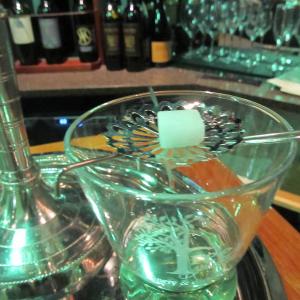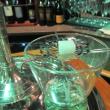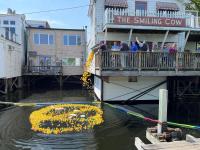Watch how Maine-made absinthe is poured
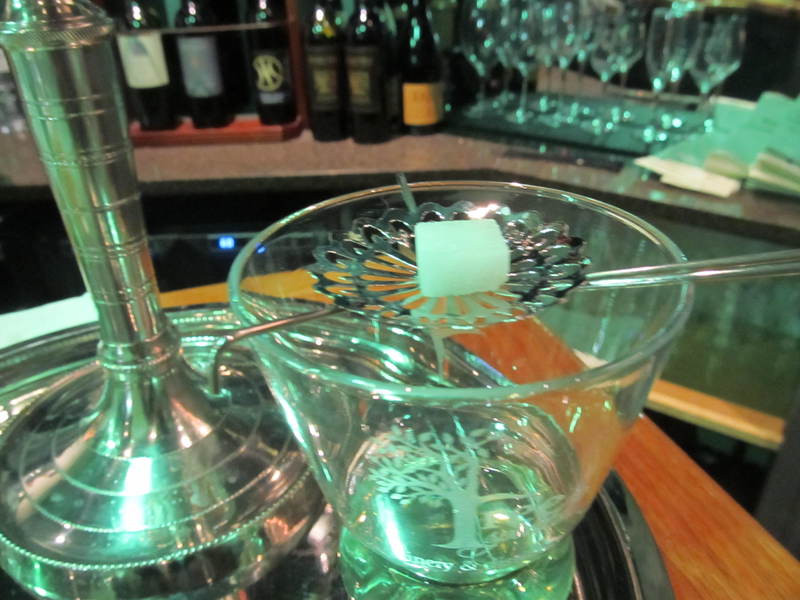 A lump of sugar balances upon a stainless steel absinthe spoon. This is the traditional 100-year-old ritual in preparing a glass of absinthe. (Photo by Kay Stephens)
A lump of sugar balances upon a stainless steel absinthe spoon. This is the traditional 100-year-old ritual in preparing a glass of absinthe. (Photo by Kay Stephens)
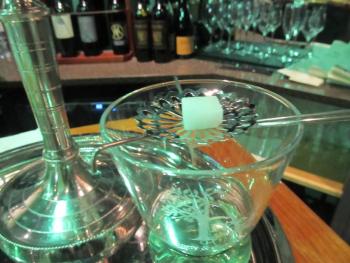 A lump of sugar balances upon a stainless steel absinthe spoon. This is the traditional 100-year-old ritual in preparing a glass of absinthe. (Photo by Kay Stephens)
A lump of sugar balances upon a stainless steel absinthe spoon. This is the traditional 100-year-old ritual in preparing a glass of absinthe. (Photo by Kay Stephens)
CAMDEN — A century ago, the bohemians and artists who wandered into a café for their afternoon “happy hour” of absinthe were all too familiar with rituals of absinthe preparation and pouring. But, because absinthe has essentially been illegal to manufacture for more than 100 years — until recent years — very few people in modern society know how to make, or drink, the cloudy green concoction.
Bruce Olson, founder and owner of Tree Spirits Winery and Distillery, went to the Vintage Room in Camden with his business partner Karen Heck Saturday night, Dec. 17, to demonstrate how absinthe is poured and sampled. Tree Spirits, based in Oakland, is the first distillery in this state to receive federal approval to make and sell absinthe since the U.S. ban on it was lifted in 2007. See our 2014 story: Absinthe, once illegal, is making a roaring comeback in Maine.
Made from a recipe from the 1800s, Olson distills his homemade applejack with grand wormwood, fennel and anise, then colors with an infusion of petite wormwood, lemon balm and hyssop.
As a small crowd gathered on a snowy night in the Vintage Room on Bay View Street, Olson provided tiny sips of the straight absinthe for people to sample. The initial taste is strongly alcoholic and aromatic of licorice.
“It its pure state, absinthe is 130 proof,” said Olson. “What you’re tasting is anise, fennel and wormwood — that’s what they call the holy trinity.”
A traditional ritual of pouring starts with an ounce of absinthe at the bottom of a bulbous glass. An elaborate contraption called an Absinthe Fountain has four spigots that drip ice cold water over a square lump of sugar balancing on an absinthe spoon across the lip of the glass.
“The idea is that as the water drips into the glass, it dilutes the drink’s potency, but it also goes from a clear green to this cloudy green,” said Heck. “Today you probably don’t need the sugar, but when it was originally created, absinthe was very bitter due to the wormwood herb.”
Once diluted, the drink’s hot sharpness mellows, but the licorice taste is predominant. Then there’s the famed hallucinogenic properties of the drink to consider.
“There’s no question that all of the herbs have an effect on you,” he said. “I think if you have enough, you’ll feel a little altered.”
To find out more about the history of absinthe, watch our video.
Kay Stephens can be reached at news@penbaypilot.com
Event Date
Address
United States

